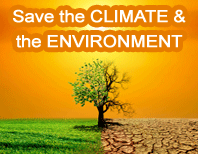MOTHER EARTH's FUTURE in our HANDS










Considering that Goal 13 and 15 of the Sustainable Development Goals (SDGs) calls for urgent action to combat climate change and to protect, restore and promote the sustainable use of terrestrial ecosystems, sustainably manage forests, combat desertification, halt and reverse land degradation and biodiversity loss, CAMGEW is taking local action to fight global environmental problems.
Forest Regeneration in Kilum-Ijim forest:
As of December 2022, CAMGEW planted 115,899 native trees in the Kilum-Ijim Forest and maintained them since 2012. Forest regeneration through planting of native trees and promotion of natural regeneration has remained CAMGEW focus and it is done yearly. This is helping to improve community livelihood, protect biodiversity, promote eco-tourism and fight climate change through preservation of the forest as carbon sink. CAMGEW’s action in regenerating the Kilum-Ijim forest with native trees of different species is a step in this line to protect biodiversity. CAMGEW has used participatory approach in forest management by engaging all stakeholders’ especially local people (men, youths and women) in forest regeneration. CAMGEW is assisting nature in regeneration and also supporting natural regeneration in the forest. CAMGEW has been regenerating degraded parts of forest. Forest monitoring is done by forest users (like bee farmers. Water catchment management committee, firewood fetchers, herbalists) who visit the forest on daily basis.
CAMGEW believes that regenerating degraded parts of the Kilum-Ijim forest is a better way of restoring the ecosystem. Some of the native trees that are planted are Newtonia camerunensis that is a Critically Endangered specie (IUCN Red list), Prunus africana (Flagship Specie), Schefflera manii, Pittosporium manii (whose seeds are food for Bannermans turaco which is critically Endangered bird), Zizygium staundtii, Maesa lanceolata, croton machrotachyst and the locally threatened Carapas grandiflora. All these tree species are native of this forest and help to sustain existing wildlife. This forest has a Plantlife Sanctuary around Lake Oku which is part of CAMGEW conservation action. Our action protect the Lake Oku frog that is endermic.
Forest Regeneration in Cameroon Western Highlands Forest:
CAMGEW has an office in Magba that covers West and Adamaoua Regions. Kilum-Ijim forest which falls in Bamenda Highlands forest (covering North West Region) is part of Cameroon Western Highlands Forest that covers West and Adamaoua Regions. In the West and Adamaoua Regions CAMGEW engage in ecosystem restoration activities. Non Timber Forest Products (NTFP) tree nurseries are developed and trees distributed to farmers to plant in their farms. The forest is not protected and degradation is very high. Many NTFPs are fast disappearing and there is need to restore them. These NTFPs include Njansang, four corners, bush mango, bush pepper and many others that we need to identify, nurse and plant. This goes with education to build nature lovers.
Activities in forest regeneration, monitoring and conservation include:
- Tree nursery Development
- Tree distribution and planting
- Forest maintenance and monitoring
- Community capacity building on Sustainable harvesting and benefit sharing
- Forest management (animation of forest platforms, Forest Management Institutions, forest users like Forest Honey cooperatives)







